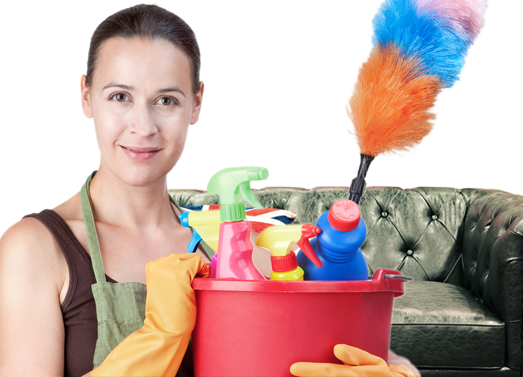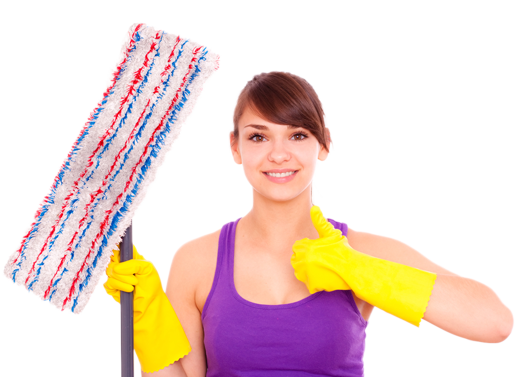The Best Practices to Keep Mold Out of Your Bathroom
Posted on 04/09/2025
The Best Practices to Keep Mold Out of Your Bathroom
Mold is a pesky and persistent intruder that thrives in warm, damp environments -- and unfortunately, bathrooms make the perfect breeding ground. Left unchecked, mold growth can ruin your bathroom's aesthetics, impact indoor air quality, and even lead to health problems for your family. To counteract these issues, it's crucial to adopt the best practices to keep mold out of your bathroom. In this comprehensive, SEO-optimized guide, we dive deep into effective strategies, maintenance routines, and expert hacks to ensure your bathroom stays inviting, fresh, and most importantly, mold-free.
Understanding Why Mold Forms in Bathrooms
Before implementing prevention techniques, it's essential to understand why bathrooms are so vulnerable to mold. Mold spores are ever-present in the air, waiting for optimal conditions to settle and grow. Since bathrooms see frequent use of water, they offer high humidity, limited ventilation, and an abundance of organic materials like soap scum, wood, or even dust -- all ideal for mold growth.
- Humidity: Steamy showers and baths create moist air, a key ingredient for mold.
- Poor Ventilation: Insufficient airflow allows moisture to linger longer.
- Organic Residue: Skin cells, hair, soap, and grime provide a food source for mold spores.
- Leaks: Dripping faucets or pipes create continuous dampness, encouraging mold development.

Essential Steps to Prevent Mold in Your Bathroom
1. Maximize Ventilation
One of the best ways to prevent mold in your bathroom is to improve ventilation. Proper air circulation helps dry surfaces faster, denying mold the moisture it needs.
- Install an Exhaust Fan: Use a quality bathroom exhaust fan and run it during and after showers for at least 20-30 minutes to expel moist air.
- Open Windows: Whenever possible, open windows to let in fresh air and allow humidity to escape.
- Use a Dehumidifier: In especially humid climates, a small bathroom dehumidifier can significantly reduce moisture levels.
2. Keep Surfaces Dry
Moist surfaces are open invitations for mildew and mold in the bathroom. Make it a habit to dry areas where water lingers.
- Wipe Down Walls and Floors: After showers or baths, squeegee or towel-dry walls, tiles, mirrors, and floors.
- Dry Shower Curtains and Doors: Pull shower curtains closed or open shower doors to let them dry fully.
- Hang Towels and Mats Properly: Allow towels and bath mats to dry completely between uses by hanging them spread out, preferably outside the bathroom.
3. Regular Deep Cleaning
Consistent and thorough cleaning stops mold before it becomes a problem. Incorporate these cleaning habits:
- Use Mold-Resistant Cleaners: Scrub bathroom surfaces weekly with antifungal or mold-resistant cleaning solutions.
- Focus on Grout and Caulk: Pay special attention to grout lines, caulk, and seals where mold loves to hide and multiply.
- Don't Forget Drains: Clean sink, tub, and shower drains regularly to eliminate organic buildup.
4. Fix Leaks and Drips Immediately
Promptly addressing plumbing issues is a critical bathroom mold prevention tip. Even a minor drip can create persistent dampness perfect for fungus.
- Monitor for Leaks: Routinely inspect under sinks, around tubs, and behind toilets for pooled water or drips.
- Repair Promptly: Replace faulty washers, broken seals, or cracked pipes without delay.
- Check Tiles and Sealant: Repair cracked tiles and re-apply grout or caulk any area that's become compromised.
5. Use Mold-Resistant Materials
If you're renovating or able to replace fixtures, opt for mold-resistant bathroom materials that inhibit spore growth.
- Choose Mold-Resistant Paint: Select paints labeled "mildew-resistant" or "for bathrooms."
- Install Mold-Resistant Drywall: Consider green board or cement board, designed specifically for damp environments.
- Opt for Non-Porous Surfaces: Glass, porcelain, and sealed tile are less likely to support mold growth than unfinished wood or fabric.
Advanced Bathroom Mold Prevention Hacks
Incorporate Routine Maintenance
Everyday vigilance is your best defender against mold in the bathroom. Adopting a monthly or bi-monthly maintenance checklist ensures that any signs of moisture or mold are caught and eliminated early.
- Clean and inspect vents and fans for dust and blockages.
- Remove and launder shower curtains and liners regularly.
- Check grout and caulk for cracks or gaps and touch up as needed.
- Keep bathroom clutter to a minimum to allow air to circulate freely.
Leverage Natural and Chemical Mold Inhibitors
Some natural substances are surprisingly effective at keeping bathroom fungus at bay.
- White Vinegar: Spray undiluted vinegar weekly on tiles and grout; let sit for a few minutes before rinsing.
- Baking Soda: Mix with water to form a paste for scrubbing grout and caulk.
- Tea Tree Oil: A natural antifungal; add a few drops to your regular cleaner for an extra mold-fighting boost.
- Commercial Mildew Sprays: Many safe, EPA-approved sprays exist for persistent or widespread mold issues.
Enhance Drying Power After Showers
When bathrooms get a lot of use, it's important to "reset" moisture levels quickly.
- After showers, keep the door and windows open when possible to speed up drying.
- Place a small fan facing damp areas for 10-15 minutes if the room stays humid.
Spotting the Early Signs of Mold in Your Bathroom
Being able to spot the first signs of mold in your bathroom can prevent a small patch from growing out of control.
- Dark Spots: Look for black, green, or brown discoloration on grout, caulk, shower curtains, or ceiling corners.
- Musty Odor: A persistent earthy or musty smell is a strong indicator of mold, even if it's not visible yet.
- Peeling Paint or Wallpaper: Moisture behind walls or under paint can indicate a hidden mold problem.
- Increased Allergy Symptoms: Sneezing, coughing, or itchy eyes that worsen in the bathroom may be due to hidden mold.
How to Remove Bathroom Mold Safely
If you've found mold in your bathroom, act quickly to remove it. Here's a step-by-step guide to cleaning mold effectively and safely:
- Ventilate: Open windows and turn on the exhaust fan for safety.
- Wear Protection: Use gloves, a mask, and goggles to avoid contact with spores.
- Mix a Cleaning Solution: Use equal parts white vinegar and water, or a commercial mold remover.
- Scrub the Area: Use a stiff brush to clean tiles, grout, and other affected surfaces.
- Rinse and Dry: Wipe surfaces clean with water and thoroughly dry.
- Dispose Carefully: Throw out used sponges or towels to avoid spreading spores.
- Repair if Needed: Replace heavily infested caulk or tiles to fully eliminate the problem.
For larger infestations (greater than 10 square feet) or for mold inside walls, seek professional remediation to ensure your home stays healthy and safe.
Long-Term Strategies for a Mold-Free Bathroom
Redoing Your Bathroom? Plan with Mold Prevention in Mind
If you're remodeling or upgrading fixtures, incorporate these upgrades to maximize your bathroom's mold-resistance:
- Upgrade to high-capacity exhaust fans with humidistats, which activate automatically as humidity rises.
- Transition to non-porous surfaces for floors and walls, such as subway tile, glass, or engineered stone.
- Opt for one-piece toilets and sinks to reduce crevices where water can accumulate.
Ongoing Education and Vigilance
Stay informed about bathroom mold prevention advances and new cleaning tools. Encourage household members to follow these best practices, particularly with drying and cleaning habits.

Frequently Asked Questions About Bathroom Mold
Q: How often should I clean the bathroom to prevent mold?
At a minimum, aim to deep clean the bathroom once every week and spot-clean high-moisture areas every few days.
Q: What's the difference between mold and mildew?
Both mold and mildew are fungi that thrive in damp places. Mildew generally appears as a white or gray powdery film on surfaces, while mold is typically black or green and more tenacious.
Q: Are some people more at risk from bathroom mold?
Yes -- individuals with allergies, asthma, or weakened immune systems are particularly sensitive to the presence of mold and should be extra vigilant about avoiding exposure.
Q: Is bleach the best cleaner for bathroom mold?
Bleach can kill mold on non-porous surfaces but may not reach mold beneath grout or caulk. Vinegar or specialized mold removers are often more effective for bathroom use.
Conclusion: Make Mold Prevention a Habit
Keeping your bathroom mold-free is not a one-time effort but a collection of proactive, everyday habits. By following these best practices to prevent bathroom mold, you can protect your health, preserve your home's value, and enjoy a sparkling, fresh-smelling bathroom year-round.
Remember: ventilate, dry, clean, and fix -- these four pillars form the foundation of a mold-resistant bathroom. With diligence, the right tools, and awareness, you can say goodbye to mold and hello to peace of mind.




